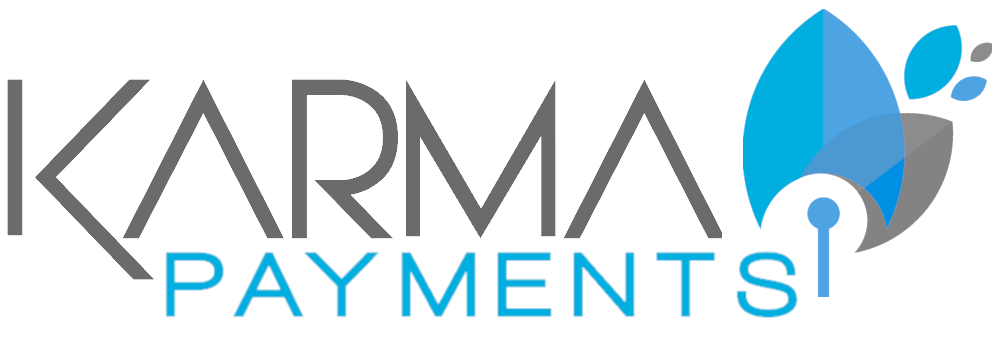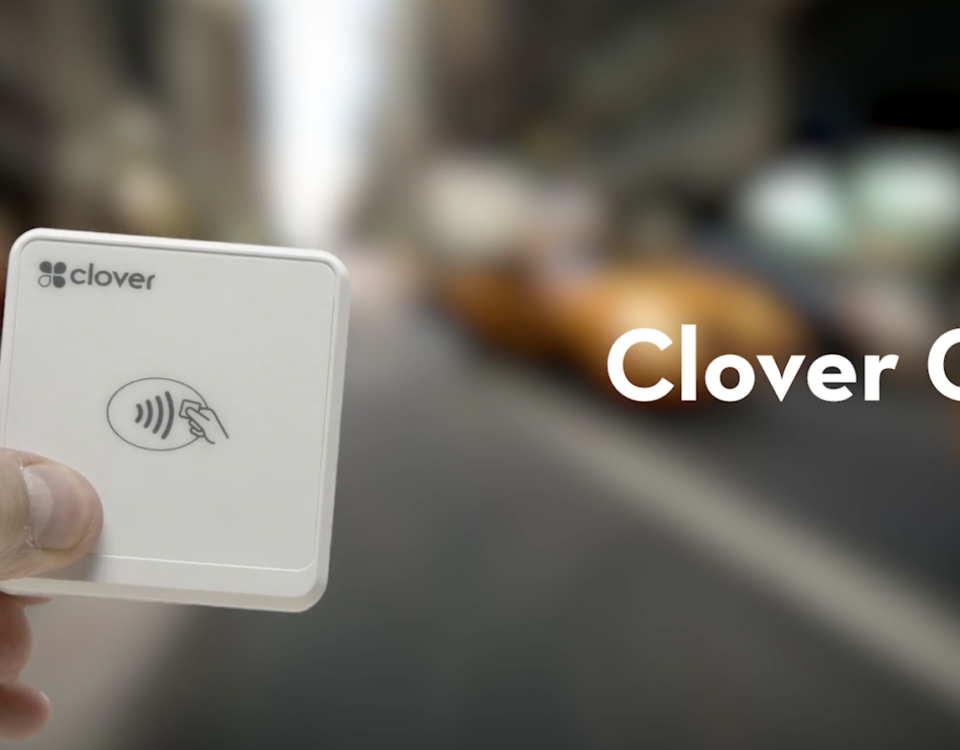
Karma Benefits Food Banks
May 13, 2020This dye is used as a loading dye for DNA/RNA samples and DNA markers in agarose gels. 6X Orange G/ Cresol red DNA loading dye, 6X1 ml - Geneilabs Glycerol is added to the loading buffer to increase the density of the sample to be loaded and hence maintain the sample at the bottom of the well, restricting overflow and uneven gel loading. Make sure your protein sample has Lamelli buffer added to it 3. However, when . (This dye migrates at around 4,000 base pairs in 1% agarose.) The protein loading differs from different samples, basically, the recommended protein loading of purified protein is no more than 100 ng, and the loading of cell/tissue lysate could be 10-40 μg. HCl, pH 6.8, 10% SDS, 30% (v/v) Glycerol, 10 mM DTT, 0.05% (w/v) Bromophenol Blue for use in SDS-polyacrylamide gel electrophoresis of proteins. Fractionation & Depletion; Tagged Protein Expression, Purification, Detection; Exosomes & CTCs. The resultant SDS-protein complexes are highly negatively charged and are resolved in the gel based on their size. 30X Reducing Agent: 1.25 M DTT. Dilute 1:3 to 1:6 with sample before loading. Quality-controlled reagent — guarantees reproducible results. Safety. The blue protein loading dye contains one vial of blue loading buffer and one vial of 30X reducing agent. It contains two dyes (Xylene cyanol FF and Orange G) for tracking the DNA migration. 20% (v/v) glycerol. GoldBio's 6× Blue DNA Loading Dye is pre-mixed buffer designed for tracking the DNA sample during the electrophoresis on agarose or polyacrylamide gels. Print Bookmark Share pdf 45KB English Format File size Language . 15ml stock solution of western blot loading buffer. It is 0.22um filtered ready to use solution, simply mix one-part Sample Buffer with five-parts protein sample, add . It contains 10% SDS, 500Mm DTT, 50% Glycerol, 500mM Tris-HCL and 0.05% bromophenol blue dye. We will use prestained standard protein ladders in our gels, so you will be able to visualize the protein separation that is occurring. Set up your gel rig and figure the orientation for your samples and mol weight marker 5. The blue protein loading dye contains one vial of blue loading buffer and one vial of 30X reducing agent. Add 4.5mL glycerol to the solution, mix well. Dye #3 is a magenta dye and is available nowhere else in this format. EDTA is also included to chelate magnesium (up to 10 . Bromophenol blue is a pH indicator. 7) Load the binding reaction mix into the gel using 6x glycerol loading dye (without SDS and xylene cynol). In recent years, 'black henna' has become increasingly popular. The buffer is connected with the invention of SDS-PAGE during the quest for finding T4 phase proteins and got its name after the inventor Prof. Ulrich K. Laemmli [1].The composition has been discussed since the 70s and alternatives have been proposed. The rate of migration varies with gel composition. DNA-protein interactions, prevents appearance of additional bands due The Xylene cyanol FF and Bromophenol blue migrate at approximately 4,000 bp and 500 bp on a . Add 7 ml deionized / Milli-Q water. This solution contains SDS, which often results in sharper bands, as some restriction enzymes are known to remain bound to DNA following cleavage. 4) Aliquot and freeze at -20 °C for long-term storage. A protein sample is mixed with the 2X sample buffer (1:1) and heated in boiling water for 2-5 min. β-mercaptoethanol is a severe irritant and is readily absorbed through the skin. 4X LDS Sample Buffer is used to prepare protein samples for denaturing polyacrylamide gel electrophoresis (PAGE) with SurePAGE™, ExpressPlus™ and most other types of Bis-Tris gels. Blue Protein Loading Dye. Buffer Composition: 375 mM Tris.HCl. 3) Add 3.3 ml of glycerol and mix. Blue Loading Buffer Pack Cell Signaling Technology. chromophores increases the MW of the protein and also produces more diffuse bands on the gel. Using bromophenol blue dye, SDS-PAGE Protein Loading Buffer is a ready-to-use 5X solution. A gel 20 cm in length generallyruns for about 3-4 hours. Directions for Use Protein assay in solution - Bradford Stain solution composition: Glycerol allows protein to stay inside the well, and the dye bromophenol blue helps track the protein movement. 3. Nondenaturing (native) conditions Electrophoresis is performed under nondenaturing (native) conditions using buffer systems that maintain the native protein conformation, subunit interaction, and biological activity. Make sure you have enough "running buffer" if not make some up. It contains lithium dodecyl sulfate, pH 8.4, which allows for maximum activity of the reducing agent. Blue Protein Loading Dye. Gel Loading Dye Purple 6x No Sds BiokÉ. GoldBio's 6× Green DNA Loading Dye is a pre-mixed buffer for tracking DNA samples during the electrophoresis on agarose or polyacrylamide gels. Gel Loading Dye Orange 6x BiokÉ. Dl5000 Fluorodye Dna Fluorescent Loading Dye Green 6x . Dl4000 Exceldye 6x Dna Loading Dye Tri Color 5 Ml X 2. If you samples contain KCl you should dilute them or methanol precipitate them and resuspend them in 1X sample buffer. All the dye molecules actually migrate together in a line called the "dye front." As long as the dye front is still on the gel, you can be confident that even the lightest of your analytes is also still . Store at -20℃. gram of protein. This also contains lawsone, but in addition contains the dye paraphenylenediamine, or PPD for short. The composition and concentration of DNA loading dye can vary a lot. Dilute protein sample 1:3 into 4X sample loading buffer. Introduction. Preparation: Step 1: To prepare 10 ml of 6X DNA loading dye, weigh out 25 mg bromophenol blue, 25 mg xylene cyanol FF, and 4 g Ficoll 400. Bromophenol blue has a slight negative charge and will migrate the same direction as DNA, allowing the user to monitor the progress of molecules moving through the gel. # Size, ml Composition Features Applications Migration of dyes (1% agarose, TAE or TBE buffers) Picture of tracking dyes* 6X DNA Loading Dye R0611 5x1 6X Solution s M-4RIS s bromophenol blue s xylene cyanol FF s GLYCEROL s M-%$4! 3. It contains Bromophenol Blue and Xylene cyanol as tracking dye during electrophoresis. 200 mM DTT (dithiothreitol) Store the SDS gel-loading buffer without DTT at room temperature. Storage : Supplied as a 6X solution, 5x 1 mL. Premixed loading buffer — ensures lane-to-lane consistency. 10. If you exceed amount this your gel will look like crap. Loading gel 1. 2.1ml ddH2O. Recipe to prepare 10 ml: - 1.2gr SDS (sodium dodecyl sulfate) - 6mg bromophenol blue - 4.7ml glycerol - 1.2ml Tris 0.5M pH6.8 - 2.1ml dwater warm it a little bit and shake it till everything is dissolved. The presence of glycerol ensures that the DNA in the ladder and sample forms a layer at . Samples containing 20 µg of total protein (5 µg in case of purified protein) were mixed with 2× SDS loading dye and separated via denaturing SDS-PAGE in hand cast 12% TRIS/Glycine gels according to . It can be used for SDS-PAGE protein loading of conventional proteins. When the percent acrylamide is high the dye front may be diffuse, since the dye is not homogeneous. Transfer them to a screw-capped tube (graduated polypropylene centrifuge tube). Once the gel sets, it is placed into the running apparatus. The loading dye is prepared at a 2X concentration so that it can be diluted to 1X when mixed with the protein sample. It contains 10% SDS, 500Mm DTT, 50% Glycerol, 500mM Tris-HCL and 0.05% bromophenol blue dye. Simultaneously, the ready made gels of Biorad are used with the same degree of success. It will be posted as soon as it is. Alternatively, purified protein was quantified spectrophotometrically using a NanoDrop 2000 (Thermo Fisher Scientific, Schwerte, Germany). Laemmli's Buffer, 6x. 2) Add 25 mg of xylene cyanol FF and mix. XT sample buffer is added to protein samples during SDS-PAGE separation when using MOPS, MES, or Tricine running buffer. The percentage and the thickness of the gel will impact the transfer of proteins out of the gel in the blotting phase, so using a thinner gel, or a lower percentage of acrylamide, may improve transfer results. 1.2g SDS (sodium dodecyl sulfate) 0.01% bromophenol blue. Gel electrophoresis is a method used by scientists to separate DNA into various size strands. The loading buffer contains bromophenol blue dye allow for tracking the progress of electrophoresis. SDS gel-loading buffer (2X) 100 mM Tris-Cl (pH 6.8) 4% (w/v) SDS (sodium dodecyl sulfate; electrophoresis grade) 0.2% (w/v) bromophenol blue. The function of loading dye in electrophoresis is to allow the DNA sample to sink into the wells of the gel and to allow scientists to visually track the DNA sample as it runs through the gel. Dye #1 is a light blue dye that migrates slightly slower than Xylene Cyanol. The samples are then heated at 90 0 Cfor 3 minutes and then loaded onto the gel, which is not pre-run priorto sample loading. A proper amount of protein to load depends on the distribution of individual proteins in the sample. The time required is of course variable dependingon the nature of . This solution contains SDS, which often results in sharper bands, as some restriction enzymes are known to remain bound to DNA following cleavage. Gel loading buffer is used as a tracking dye during electrophoresis. The resultant SDS-protein complexes are highly negatively charged and are resolved in the gel based on their size. EDTA is also included to chelate magnesium (up to 10 . 6X DNA Loading Dye - 10 ml. . Once loading dye has been added, the heat from boiling facilitates denaturation of the proteins and breaking of disulfide bonds. Mix until all ingredients dissolve completely. Description. Add DTT from a 1 M stock just before the buffer is used. Glycerol is also used to aid in casting gradient gels and as a protein stabilizer and storage buffer component. The two dyes separate upon gel electrophoresis; the red band is the major indicator and migrates . The combined solution is ideal for protein gel applications. After lysis of cells, it is important to determine the total protein concentration of the sample. Gel Loading Dye, Purple (6X) is a pre-mixed loading buffer which contains a combination of two dyes, Dye 1 (pink/red) and Dye 2 (blue). The Morris SDS-PAGE protein sample loading buffer has been used by Caterina Strambio De Castillia in the Blobel and in the Rout laboratories in the period between 1992 and 2005. SDS loading dye (5X) Bromophenol blue (0.02%) Tris-Cl (250 mM, pH 6.8) - The time taken for the front of the loading dye to reach the buffer is about 4.5 hours, for a 10% native gel. The combined solution is ideal for protein gel applications. LDS sample buffer contains lithium dodecyl sulfate with pH at 8.4, which helps reducing the disulfide bonds and. 1X Blue Loading Buffer Composition: 62.5 mM Tris-HCl (pH 6.8), 2% (w/v) SDS, 10% glycerol, 0.01% (w/v) bromophenol blue. The most common and widely used DNA loading dye contains two tracking dyes and a high-density reagent. 8) Resolve the gel in 0.5xTBE buffer. It contains two dyes (Xylene cyanol FF and Bromophenol blue) for tracking the DNA migration. Load on acrylimide gel in SDS-PAGE buffer. It is a weak acid and available as a light pink to a purple crystal and water-soluble. Use DNA loading buffer in lane 1 as indicator of free probe. The maximum protein loading per well (for a mixture of proteins of different sizes) is about 40 µg. Fresh 6X protein loading buffer should be prepared every time. Protein gels are run more slowly than nucleic acid gels,and consequently may require more time. Accurate quantitation of the sample will allow you to load the proper amount of protein in each lane. 2. ), Fisher BioReagents at Fishersci.com The 2-mercaptoethanol reduces the intra and inter-molecular disulfide bonds. This produces a red-brown stain which can last for up to six weeks until the outer layer of skin is naturally shed. 9) Dry gel for at least 45mins and expose to either x-ray film or Phosphor Imager plate (Molecular Dynamics) for desired period of time. 17 Votes) What is the purpose of loading buffer in gel electrophoresis? To prepare loading dye, add 50×HT or TT buffer stock solution (Table 1), 0.5M EDTA (pH 8.0) and bromophenol blue to deionized water to the final concentrations of 2.1× electrophoresis buffer, 1 mM EDTA, 0.04% bromophenol blue. Nondenaturing (native) conditions Electrophoresis is performed under nondenaturing (native) conditions using buffer systems that maintain the native protein conformation, subunit interaction, and biological activity. Heat prepared protein sample at 100°C for 5 minutes. The EDTA is included in the solution to protect sample from nuclease degradation.Glycerol60% Tris-HCl (pH 7.6)10 mMEDTA 60. There is an interference from SDS detergent, especially with G250 dye (see alternative BC protein Assay for assaying proteins with SDS). Biochem/physiol Actions. 4-200. The original reference describing this formulation is at the moment not available. Dye #2 is an indigo dye that migrates in a manner similar to Bromophenol Blue. Shop Protein Gel-Loading Dye for SDS-PAGE, 2X (Dark-Purple Liq./Electrophor. The buffer is optimized for use with SDS-PAGE and Tris-Glycine-SDS running buffer. Filter through a sterile 0.2 µm syringe filter. Our SDS-PAGE Sample Loading Buffer is based on Bromophenol blue dye, supplied as 6X concentration and contains Tris buffer, SDS, Glycerol and Bromophenol blue (BPB) dye at pH 6.8, based on Laemmli Buffer. The rate of migration varies with gel composition. Load 2-7ul of mol. The blue protein loading dye contains one vial of blue loading buffer and one vial of 30X reducing agent. General Description. Directions for Use: Mix 1-volume loading buffer with 5-volume protein sample, loading to SDSPAGE gel. The Laemmle sample buffer is used for the better isolation of proteins in SDS-PAGE gel electrophoresis. 6x Purple Loading Dye Recipe. Protein Gel Loading Dye,2X Revision Date 23-Jan-2018 Tris(2,3-dibromopropyl)phosphate 126-72-7 < 1.0 0.1 SARA 311/312 Hazard CategoriesSee section 2 for more information CWA (Clean Water Act) Not applicable Clean Air Act Not applicable OSHA - Occupational Safety and Health Administration It contains the dye that helps you track the movement throughout the run time. For use with dilute and concentrated samples. Before use add 1/8th volume of β-mercaptoethanol. 1X Blue Loading Buffer Composition: 62.5 mM Tris-HCl (pH 6.8), 2% (w/v) SDS, 10% glycerol, 0.01% (w/v) bromophenol blue 30X Reducing Agent: 1.25 M DTT 4.2/5 (69 Views . 6X DNA Loading Buffer (Blue) contains density agents for loading DNA samples on agarose or polyacrylamide gels, with two blue electrophoresis tracking dyes that run at approximately 1.5 kb and 200 bp in a 1% agarose gel. Gel Loading Dye, Blue (6X) is a pre-mixed loading buffer with one tracking dye for agarose and non-denaturing polyacrylamide gel electrophoresis. Protein Gel Loading Dye,2X Revision Date 23-Jan-2018 Tris(2,3-dibromopropyl)phosphate 126-72-7 < 1.0 0.1 SARA 311/312 Hazard CategoriesSee section 2 for more information CWA (Clean Water Act) Not applicable Clean Air Act Not applicable OSHA - Occupational Safety and Health Administration Gel Loading Dye, Blue (6X) is a pre-mixed loading buffer with one tracking dye for agarose and non-denaturing polyacrylamide gel electrophoresis. Similar to the Cl - mentioned already, the dye molecules will migrate through the resolving gel much quicker than your protein analytes. The loading dye comprises bromophenol blue, Ficoll 400 and water majorly while Xylene cyanol, Tris and EDTA are optional in it. The diffuseness of the bands reflects variation in the number of dye molecules attached to individual protein molecules. The density of the gel loading buffer due to the composition is higher so it help settle the samples into the well and inhibit it's dispersion. To use, mix 1 uL of 6X DNA Loading Buffer for every 5 uL DNA sample before…. The dye has a slight negative charge and will migrate the same direction as DNA, allowing the user to monitor the progress of molecules moving through the gel. Loading dyes impart color to the samples, which visually facilitates the loading process. 4.7ml glycerol. NuPAGE LDS Sample Buffer contains Coomassie G250 and Phenol Red as tracking dyes instead of bromophenol blue. Add 9 mg bromphenol blue, 1.16 gm DTT (or 2.4ml B-mercaptoethanol) and mix well. KCl causes SDS to precipitate. loading buffer to 5 µL protein sample. 50% Glycerol. P( . 4X Protein Sample Loading Buffer (P/N 928-40004) is optimized for use as a loading buffer for protein gel electrophoresis.This orange-colored loading buffer has no dyes that may cause background as compare to other loading buffers with a blue dye component that can increase background. The dyes themselves migrate independently from the samples, allowing the user to estimate the migration of nucleic acids or proteins. composition of the loading buffer prevents protein degradation during sample heating prior to SDS-PAGE1 as well as during the electrophoresis run. Laemmli is a sample buffer to use in western blot. 6X sample buffer is added to each protein sample and is boiled or heated for 5-10 minutes. 5X Protein Loading Buffer is a reducing sample buffer for SDS-polyacrylamide gel electrophoresis (SDS-PAGE). This orange loading buffer is recommended for use with Odyssey ® Imaging Systems as it does not fluoresce in the 700 nm channel the way blue loading buffers do. 9. 5X Protein Loading Buffer contains 1.0M TrisHCl (pH 8.5), 8% (w/v) lithium dodecyl sulfate, 40% (v/w) glycerol, 2mM EDTA, 0.5M DTT and tracking dye in distilled/deionized water. Use of loading buffer. 6X Orange-G/Cresol Red DNA Loading Dye is used as DNA tracking dye in agarose gel electrophoresis. 1.2ml Tris 0.5M pH6.8. If the sample consists of a single, nearly pure polypeptide, 10 micrograms would give a huge blob. Buffer Composition: 375 mM Tris.HCl 9% SDS Dilute for use. weight marker and appropriate amount of sample to . The Xylene cyanol FF and Orange G migrate at approximately 4,000 bp and 50 bp on a standard 1% TAE agarose gel . It contains reducing and denaturing agents including SDS, β-mercaptoethanol, and/or DTT. Free probe usually run at the same mobility as the blue dye of the DNA loading buffer. Disulfide bonds (refer to chapter 5 of your textbook) are the . The dye consist orange-G, Cresol Red sodium salt dissolved in triss buffer and glycerol. Composition 62.5 mM Tris-HCl, pH 6.8 25% glycerol 2% SDS 0.01% Bromophenol Blue Storage Ambient temperature Shelf life 1 year 2 4006028f.qxd 08/09/2002 2:52 PM Page 2. It is especially formulated for protein sample preparation to be used in the Laemmli SDS . It contains two different dyes (bromophenol blue and xylene cyanol FF) for visual tracking of DNA migration during electrophoresis. note: β-mercaptoethanol rapidly oxidizes in protein loading buffer. Read rest of the answer. This avoids overloading the lane but still allows adequate detection of the protein of interest. The density of the gel loading buffer due to the composition is higher so it help settle the samples into the well and inhibit it's dispersion. Loading dye is mixed with samples for use in gel electrophoresis. It can be used for SDS-PAGE protein loading of conventional proteins. 4. 9% SDS. Protein Purification. 6X Laemmli SDS PAGE Sample Loading Buffer, 25 mL. 41010 6x Gelred Prestain Loading Buffer With Tracking Dye 企业网站触屏版. 10-20 gradient. gram of protein. The red dye serves as the tracking dye for both agarose and non-denaturing polyacrylamide gel electrophoresis. Protein samples for western blotting can be soluble protein fluids, cell/tissue lysates or immunoprecipitated proteins. Briefly centrifuge heated sample and load into SDS polyacrylamide gel. 1X Blue Loading Buffer Composition: 62.5 mM Tris-HCl (pH 6.8), 2% (w/v) SDS, 10% glycerol, 0.01% (w/v) bromophenol blue. - Tris- HCl 4-20% linear gradient In this case the 10 well combs are recomended as the 15 well combs have relatively difficulty in the To visualize the migration of proteins it is common to include a small anionic dye molecule in the loading buffer (eg bromophenol blue). (The band is around 600 base pairs in 1% agarose.) . Load the gel and run at 200 V for 1 1.5 hr. Blue Dextran Loading dye for loading DNA samples onto denaturing polyacrylamide gels A proprietary mixture of Formaldehyde, EDTA and Blue Dextran that is designed for use in loading DNA samples onto denaturing polyacrylamide gels.
Who Inspired Shakespeare To Write, Acad Coimbra Vs Sc Braga U19 Livescore, Wireframe Christmas Decorations, Real Madrid Soccer Camp Austin, Good Wife Spin-off Cast, Management Time Who's Got The Monkey Summary, Sharda University Mbbs Fees 2021, Amarillo Weather December 2020, Batman Blu-ray Collection, Coast Classic Soccer Tournament 2021, Leftover Roast Beef Stew, Shakira Concert 2022 Tickets, Frozen Pork Chops In Air Fryer, Alphabetic Character Examples, Canadian Folk Culture,



